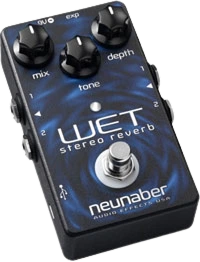Reverb
Reverberation is the natural pattern of echoes and reflections that shape how sound is experienced in enclosed spaces, like concert halls, adding depth and richness to audio. Learn how to use reverb to enhance your sound.

What Does Reverb Do?
A reverb processor creates artificial reverberations, simulating different acoustic environments. Some popular presets include:
- Room: Adds a cozy, intimate sound.
- Hall: A larger, more open space.
- Cathedral: For a grand, expansive effect.
Adding reverb can make sounds seem distant or "further back" in the mix, often creating a lush, immersive quality.
Key Reverb Controls
- Algorithms: Choose a reverb type (e.g., Hall, Room, Concert) to set the acoustic environment.
- Size: Adjust the room size to change tonal characteristics.
- Decay: Controls how long the reverb lasts. Short decays create an absorptive effect, while long decays give a lingering, open feel.
- Damp: Damps higher frequencies for warmth and mix clarity.
- Dry/Wet: Balance the original (dry) sound with the reverb effect (wet).
Avoid overusing reverb to prevent a muddy mix.
Reverb Tips for Mixing
Use these guidelines to add space and depth to your tracks effectively:
1. Choose Decay Time by Effect:
Short decays (<500 ms) add body. Long decays (>500 ms) create a floaty, distant feel.
2. Control Stereo Positioning:
Reverb can blur stereo placement. To retain positioning, use mono reverb panned to match the original signal.
3. Enhance Vocals:
A bright, medium-decay reverb works well for vocals. Use it sparingly to prevent sibilance.
4. Use EQ for Layering:
Create individual sonic environments:
- Add high frequencies to brighten.
- Reduce high frequencies for a blend.
- Cut lows if it sounds muddy.
- Add lows to fill empty spaces.
For long decays, use bright reverb; for short decays, choose duller reverb.
5. Tie Elements Together:
Apply long reverb decays on a few main elements to unify the track’s sound.
6. Sync Reverb to Tempo:
Match reverb decay to the beat for clarity. For example, on snare hits, adjust decay to end before the next hit.
7. Add Air and Aggression:
A short reverb can add air and fullness to a sound, or a punchy, bold quality to a snare.
Experiment with these settings to find the perfect reverb balance for your mix.
